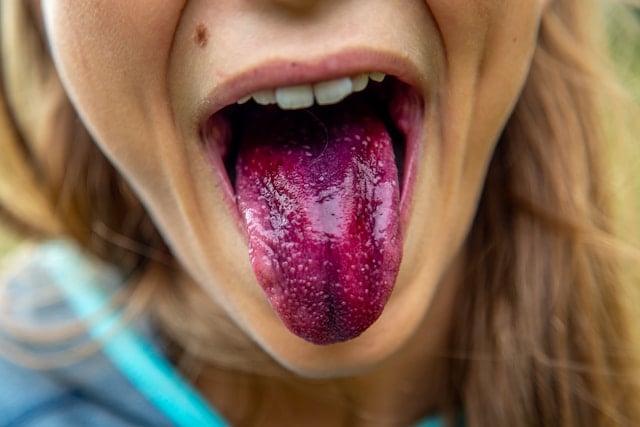Your tongue tells a story! Watch closely, and you might catch early health signals worth knowing. Here are 11 health signals your tongue could be sending you.

1. Thick White Coating
A cottage-cheese-like layer could be oral thrush, caused by Candida overgrowth. It’s common in infants, older adults, and people with weak immunity. If it bothers you or won’t go away, a doctor’s visit and antifungal treatment might be needed.
2. Smooth, Glossy Tongue
If your tongue looks shiny and smooth, it could be missing its usual bumps (papillae). That might point to vitamin B12, iron, or folate deficiency, or even anemia. A blood test could reveal what’s missing.
3. Red, Inflamed Tongue
A bright red or unusually inflamed tongue might mean you lack certain nutrients, especially B-complex vitamins, or there’s swelling or irritation. Make sure you’re eating a varied diet and consult your doctor if it lingers.
4. Yellow Coverage
A yellow coating often comes from bacterial buildup or poor oral hygiene. It might also be due to smoking, coffee, or tea. Brushing your tongue gently and staying hydrated usually helps clear things up.
5. Black, Hairy Tongue
This odd-looking, black, furry tongue is usually harmless. It happens when papillae get stained or grow long from poor hygiene, dehydration, or mouthwash overuse. Brushing your tongue and improving hydration typically resolves it.

6. Deep Cracks or Fissures
If your tongue has deep grooves or cracks, it’s likely a harmless condition called fissured tongue. It’s more common as people age and can trap food. Simply keeping the tongue clean and rinsing after meals helps.
7. Smooth, Red Bald Patches (Geographic Tongue)
Also known as benign migratory glossitis, these smooth, red map-like patches come and go. They’re usually harmless but may be slightly sensitive to spicy or acidic foods. They could flare up during stress or illness.
8. Glossy Bald Patch on Middle (Median Rhomboid Glossitis)
A smooth, red patch in the middle of your tongue could suggest a yeast infection or chronic irritation. If it persists, your doctor might recommend antifungal treatment or look into other causes.
9. Swollen or Enlarged Tongue (Macroglossia)
A tongue that sticks out or feels swollen could mean allergies, thyroid issues, or even Down syndrome. If it’s noticeable or causing breathing or speaking issues, it’s best to talk with a doctor.
10. Painful Sores or Ulcers
Almost everyone gets canker sores or ulcers now and then. If one lasts more than two weeks, keeps coming back, or looks unusual, it might be leukoplakia, oral thrush, or even oral cancer. Professional evaluation would be wise.
11. Red Spots at the Tip (Emotional/Stress Signal)
Tiny red dots at the tongue tip may signal inflammation from stress, anxiety, or emotional turmoil—sometimes referred to as “Heart Heat” in traditional medicine. If they recur during hard times, try stress-relief techniques and stay hydrated.

When to See a Doctor
Minor changes usually clear up with good oral hygiene, hydration, and a balanced diet. But if you notice any of these:
- Symptoms lasting longer than two weeks
- Painful or bothersome sensations
- Persistent redness, swelling, or discoloration
…it’s smart to consult a healthcare provider. They can check for infections, nutritional issues, or other health conditions.
How to Keep Your Tongue in Tip-Top Shape
- Brush your tongue gently each time you brush your teeth
- Rinse with mouthwash or salt water after sticking foods like seeds or fibers
- Stay well-hydrated and maintain good oral hygiene
- Eat a balanced diet rich in iron, vitamins B12, and folate
- Limit smoking, caffeine, and alcohol
- Manage stress through exercise, sleep, and mindfulness
Your tongue is a real-time health dashboard. Watch for changes in color, texture, and size. Often, simple fixes like better brushing and better food solve the mystery. But for anything unusual or persistent, seeing a professional early is positive for your health.


0 Comments